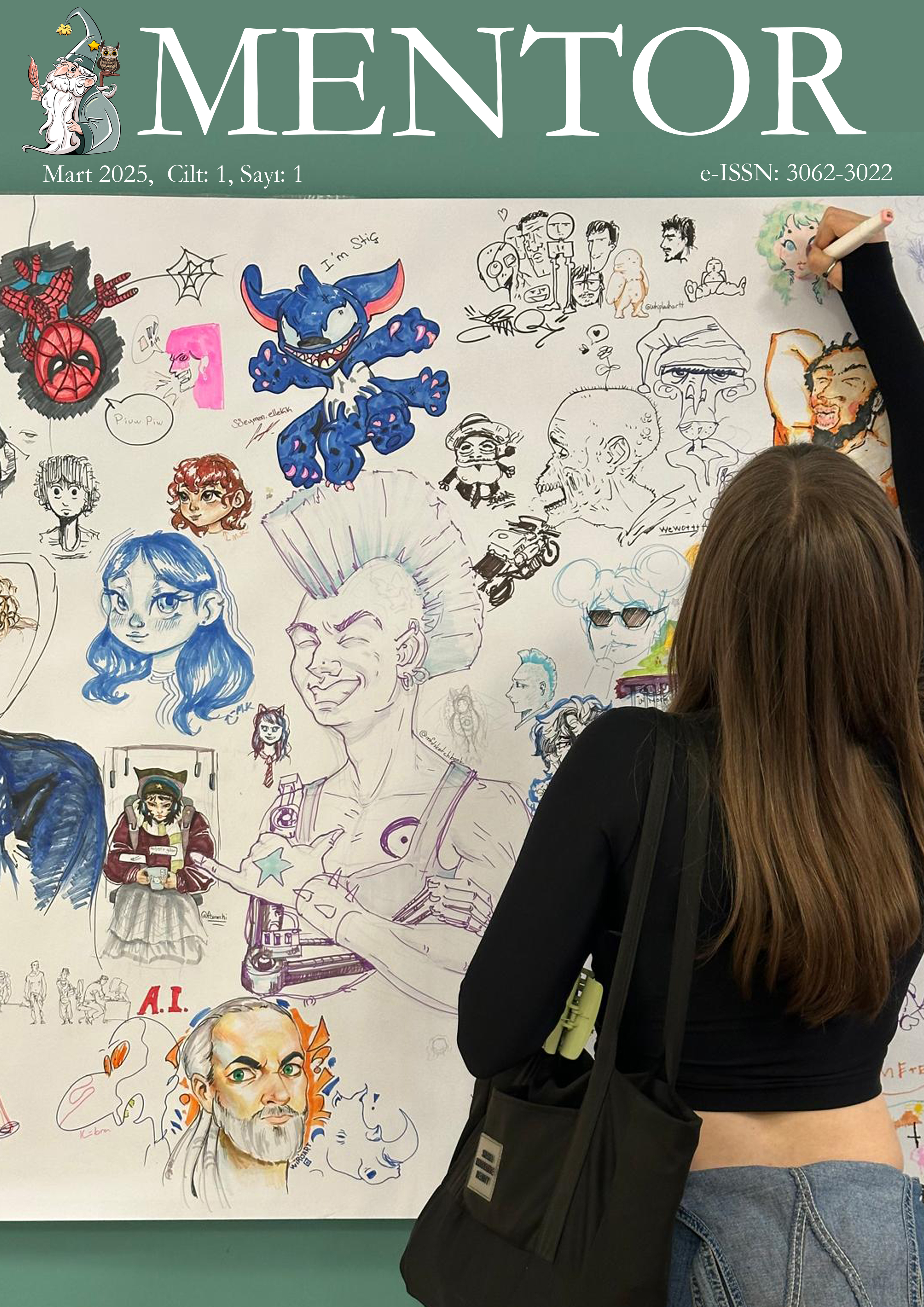Video Art Experience: Hale Tenger’s “Beirut”
DOI:
https://doi.org/10.5281/zenodo.15063009Keywords:
Video Art, Artwork Experience, ViewerAbstract
Video, as a medium, was transformed from mass media in the 1960s into an artistic material by Nam June Paik as a rebellion against television. This transformation led to the emergence of video art and different video art concepts. In Turkey, video art became a widely used art discipline after 1995. The experience of video art has a different structure from the experience of other artworks. These works ofter experiences in which the viewer uses her sensory organs the most. Video artworks are presented to the audience by combining visual messages, sound effects and, elements that affect many sensory organs. Video art has offered many different experiences to the audience since its emergence. These experiences differ according to people's cultures, environments, knowledge and, lifestyles. In this paper, the experience of the viewer, the work’s relationship with space, and how this relationship differs from other works of art, is examined through Hale Tenger's Beirut (2005- 2007), which is exhibited at the Istanbul Museum of Modern Art.
References
Altunay, A. (2004). Mekanik Sanattan Elektronik Sanata Geçiş ve Video Sanatı. Eskişehir: Anadolu Üniversitesi.
Beyaz, G. G. (2016). Nam June Paik ve Onun Tabula Rasa’sı: Video. İstanbul Aydın Üniversitesi Dergisi, 8(29), 1-16.
Bozkurt, M. (2012). Video Sanatı: Performans, Enstalasyon ve Heykel. Yeni Medya Ve....(Ed: Deniz Yengin), İstanbul: Anahtar Kitapları Yayınevi.
Çankır, M. B. (2018). Video Sanatın Görsel Disiplinlerle Etkileşimi. [Yayımlanmamış Yüksek Lisans Tezi], İstanbul Aydın Üniversitesi, İstanbul.
Çankır, M. B. (2017). Toplumsal ve Teknolojik Gelişmeler Bağlamında Video Sanatı. İstanbul Aydın Üniversitesi Güzel Sanatlar Fakültesi Dergisi, 3(6), 31-37.
Dewey J. (2021). Deneyim Olarak Sanat. (N. Küçük, Çev). İstanbul: Vakıfbank Kültür Yayınları.
Dömbekci, H. A., & Erişen, M. A. (2022). Nitel Araştırmalarda Görüşme Tekniği. Anadolu Üniversitesi Sosyal Bilimler Dergisi, 22(Özel Sayı 2), 141-160.
Eroğlu, A. (2017). John Dewey’de Deneyim ve Sanat. [Yayımlanmamış Doktora Tezi], Atatürk Üniversitesi, Erzurum.
Güneş Ş. (2009). Türkiye'de Video Sanatı. Artist Actual Sanat Dergisi.
İstanbul Modern Koleksiyon, (05 Ocak 2025) Nil Yalter, Başsız Kadın ya da Göbek Dansı, 1974. Erişim adresi: https://www.istanbulmodern.org/koleksiyon/bassiz-kadin-ya-da-gobek-dansi.
İstanbul Modern Koleksiyon, (10 Ocak 2025) Hale Tenger, Beyrut, 2005-2007. Erişim adresi: https://www.istanbulmodern.org/koleksiyon/beyrut.
Kantürk, B. (2022). Türkiye Güncel Sanatında Video Sanatının Bugünü ve Video Sanatına Odaklı Sergileme, Organizasyon Modelleri. İdil Sanat ve Dil Dergisi, 11(94), 851-864.
Özgen, K. (2019). Video Sanatının Düşünce Sinemasına Etkisi. SineFilozofi, 4(7), 47-60.
Sinan, E. E. (2021) Bir (T)arafta Olmak. Galeri Nev İstanbul, Güncel, Sayı 32. Erişim adresi: https://www.galerinevistanbul.com/tr/online-publications/.
Görsel Kaynaklar
Görsel 1. Sony Portapak, 1970. https://magazine.artland.com/agents-of-change-how-the-sony-portapak-has-created-a-new-artistic-medium/ Erişim tarihi: 7.01.2025.
Görsel 2. Nam June Paik, Magnet Tv, 1965. https://whitney.org/collection/works/6139 Erişim tarihi: 10.01.2025.
Görsel 3. Nam June Paik, Tv Buddha 1974. https://www.tate.org.uk/whats-on/tate-modern/nam-june-paik/exhibition-guide Erişim tarihi: 13.01.2025.
Görsel 4. Nam June Paik, Robot Ailesi. https://dergipark.org.tr/tr/download/article-file/319474 Erişim tarihi: 13.01.2025.
Görsel 5.Nil Yalter, Başsız Kadın ya da Göbek Dansı, 1974. https://www.artfulliving.com.tr/sanat/nil-yalter-ve-gorunmeyenler-i-9151 Erişim tarihi: 15.01.2025.
Görsel 6. Hale Tenger, Beyrut, 2005-2007, İstanbul Modern Sanat Müzesi. https://www.istanbulmodern.org/koleksiyon/beyrut Erişim tarihi: 17.01.2025.
Downloads
Published
How to Cite
Issue
Section
License
Copyright (c) 2025 Mehmet Ali Bayram

This work is licensed under a Creative Commons Attribution 4.0 International License.




